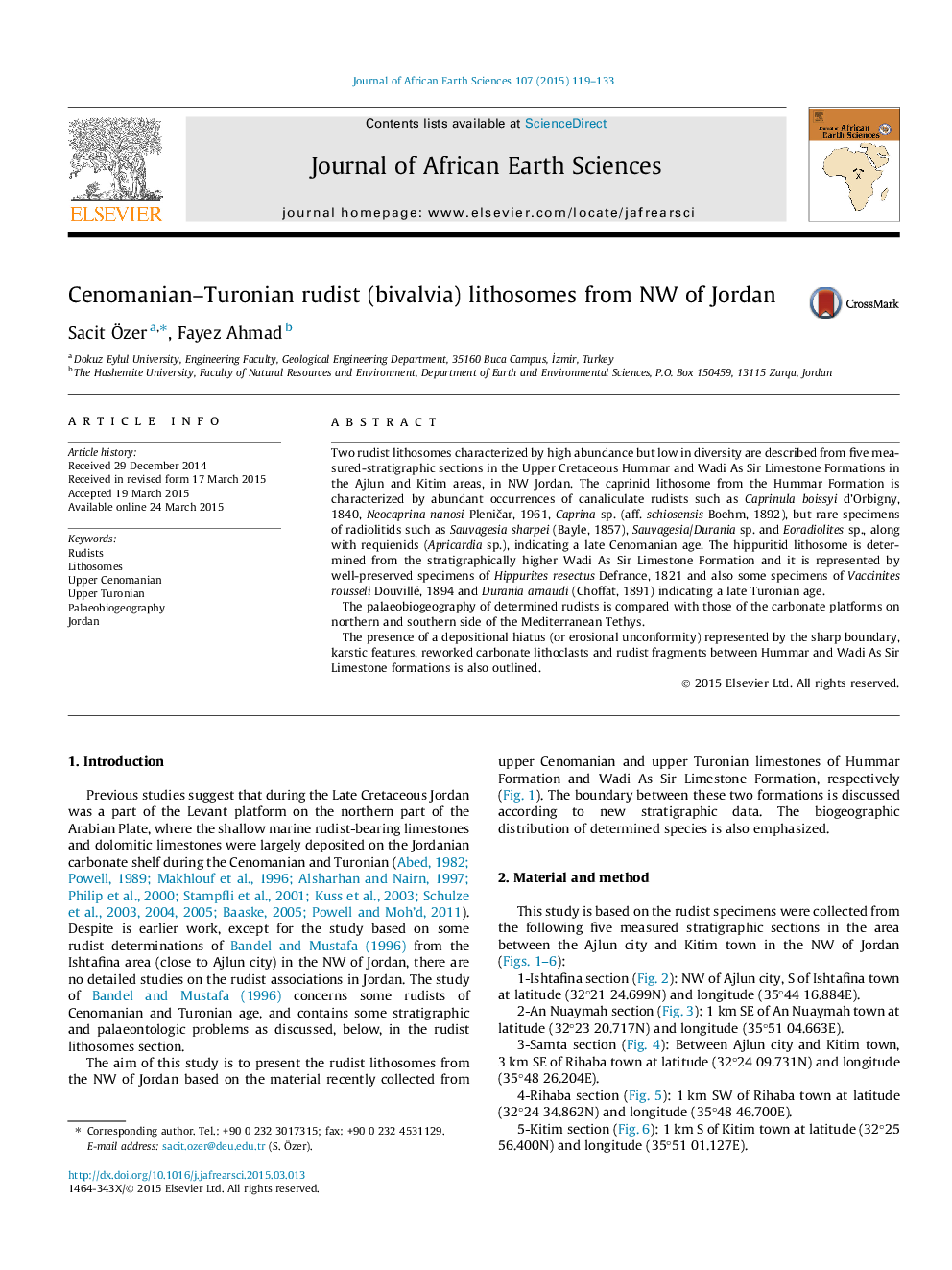| Article ID | Journal | Published Year | Pages | File Type |
|---|---|---|---|---|
| 4728577 | Journal of African Earth Sciences | 2015 | 15 Pages |
•Two rudist lithosomes are determined from NW Jordan.•Hummar Formation consists of canaliculate and radiolitid rudists indicating late Cenomanian age.•Wadi As Sir Limestone Formation comprises hippuritids and radiolitids showing late Turonian age.•A hiatus between two formations is indicated.•The low diversity of the rudists has a similarity with that of southern margin of the Mediterranean Tethys.
Two rudist lithosomes characterized by high abundance but low in diversity are described from five measured-stratigraphic sections in the Upper Cretaceous Hummar and Wadi As Sir Limestone Formations in the Ajlun and Kitim areas, in NW Jordan. The caprinid lithosome from the Hummar Formation is characterized by abundant occurrences of canaliculate rudists such as Caprinula boissyi d’Orbigny, 1840, Neocaprina nanosi Pleničar, 1961, Caprina sp. (aff. schiosensis Boehm, 1892), but rare specimens of radiolitids such as Sauvagesia sharpei (Bayle, 1857), Sauvagesia/Durania sp. and Eoradiolites sp., along with requienids (Apricardia sp.), indicating a late Cenomanian age. The hippuritid lithosome is determined from the stratigraphically higher Wadi As Sir Limestone Formation and it is represented by well-preserved specimens of Hippurites resectus Defrance, 1821 and also some specimens of Vaccinites rousseli Douvillé, 1894 and Durania arnaudi ( Choffat, 1891) indicating a late Turonian age.The palaeobiogeography of determined rudists is compared with those of the carbonate platforms on northern and southern side of the Mediterranean Tethys.The presence of a depositional hiatus (or erosional unconformity) represented by the sharp boundary, karstic features, reworked carbonate lithoclasts and rudist fragments between Hummar and Wadi As Sir Limestone formations is also outlined.
